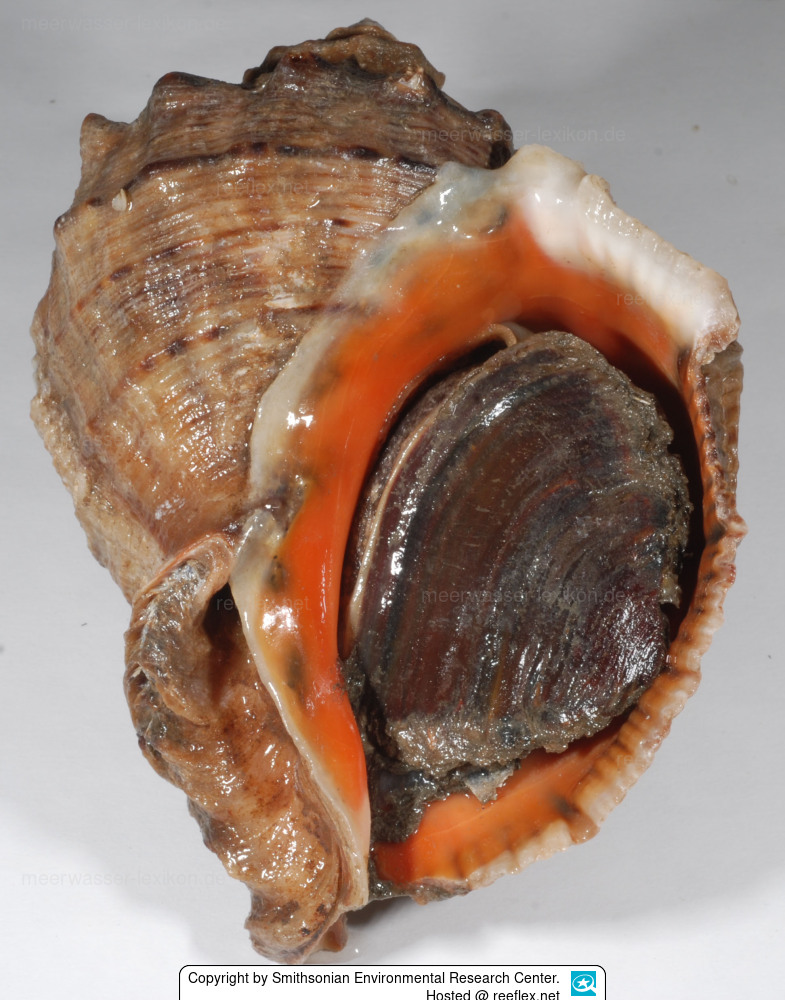Info
A good example of perfect adaptation to a new range is represented by large predatory sea snail, which is an invasive alien species brought to the Black Sea from the Pacific Ocean in ballast water in the 1940s.
From the Black Sea, the large snail has traveled throughout the Mediterranean Sea, across the Bay of Biscay, and high north into the North Sea to Belgium.
The large shell snail feeds mainly on the striped clam, Chamelea gallina (Linnaeus, 1758).
Predator: The biggest predator of Rapana venosa is the loggerhead turtle Caretta caretta.
The generic name "Rapana" comes from Latin, "Rapa" means turnip.
Synonyms:
Purpura marginata Valenciennes, 1846
Purpura venosa Valenciennes, 1846
Rapana pechiliensis Grabau & S. G. King, 1928
Rapana pontica F. Nordsieck, 1968
Rapana thomasiana Crosse, 1861







 Smithsonian Environmental Research Center
Smithsonian Environmental Research Center

